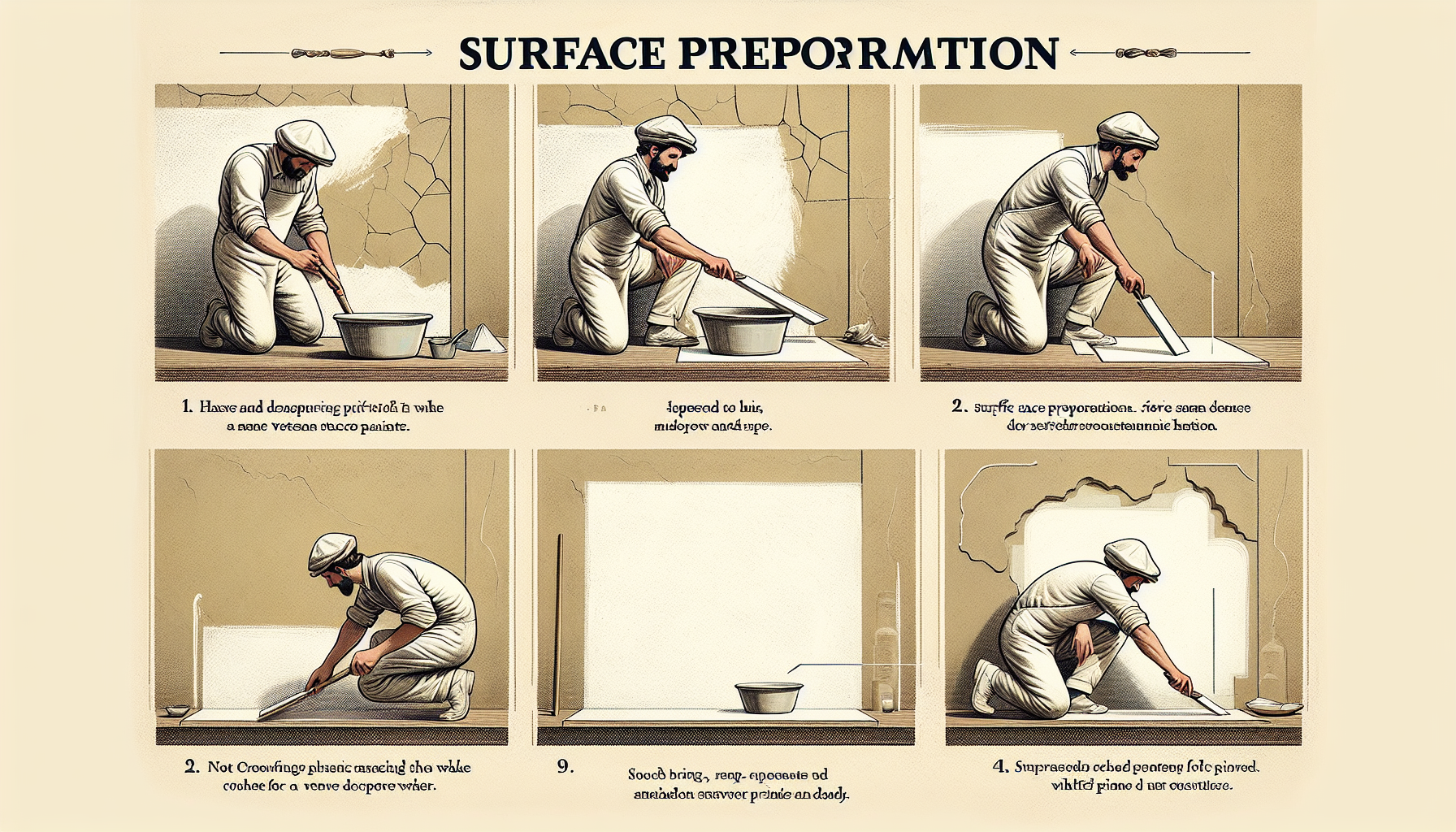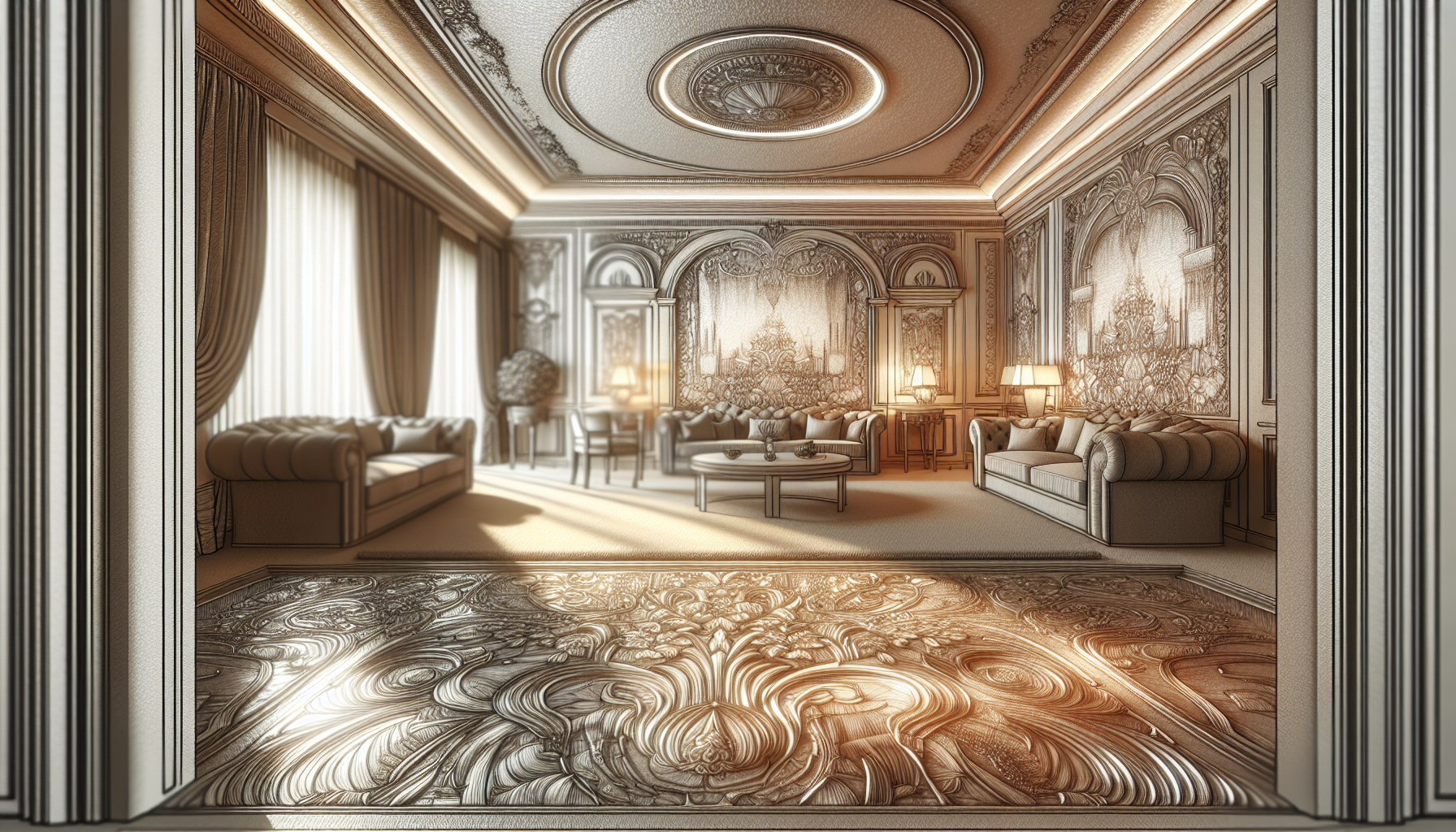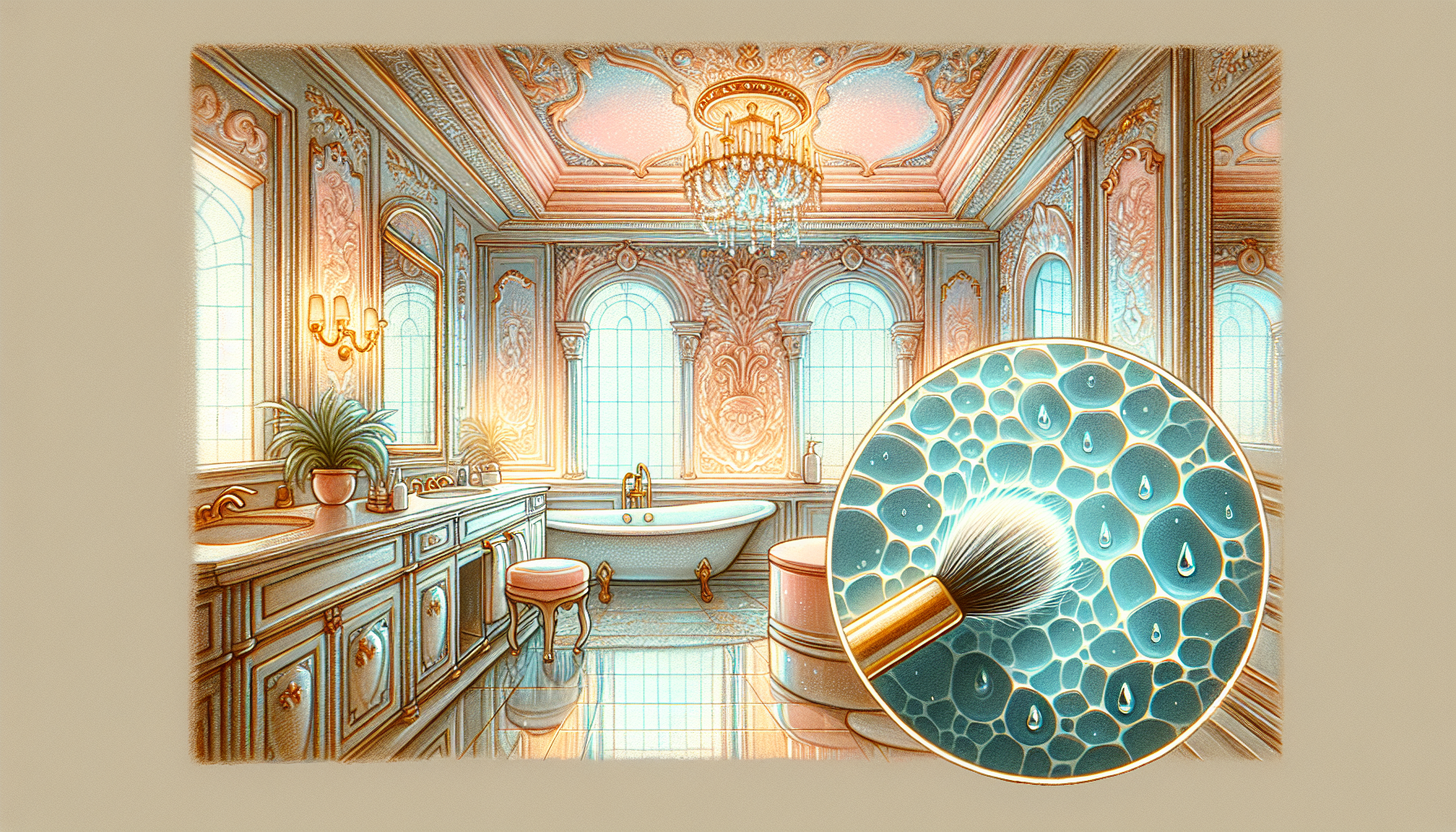Transform Your Walls: Achieve Timeless Elegance with Venetian Stucco Paint
If you’re exploring the options of Venetian stucco paint for your home or project, you’ve come to the right place. This timeless technique offers walls that reflect a deep, natural beauty unparalleled by other finishes. Here we’ll unpack the what, why, and how of Venetian stucco from its eco friendly composition to the application secrets that achieve its signature marble sheen – along with comparisons to common alternatives like regular paint or wallpaper. Get ready to turn your space into a canvas of lasting elegance.
Key Takeaways
- Venetian stucco paint, known for its lustrous sheen and marble-like appearance, has a rich heritage and is a durable, eco-friendly wall finish that can absorb carbon dioxide.
- Proper application and surface preparation are essential to achieving the signature polished finish of Venetian stucco, which involves multiple layers and skilled burnishing. Color customization offers design versatility.
- Venetian stucco is a low-maintenance, long-lasting wall finish with benefits over traditional paints and wallpapers, such as its tactile texture, resistance to mold and mildew, and the distinctive, elegant ambiance it brings
Exploring the Beauty of Venetian Stucco Paint

Venetian plaster, with its origins rooted in antiquity, is a testament to both history and luxury. Renowned for adorning the walls of regal palaces and hallowed sites, this material embodies the highest quality, sophistication, and durability—a lifetime finish that has stood the test of time.
Venetian stucco is a popular choice for adding a marble-like look and shine to interiors. This plaster makes spaces look like they belong in the Renaissance.
The Composition and Benefits of Venetian Stucco Paint
The distinctive texture and radiant sheen of Venetian plaster come from a time-honored mix originating in Venice, which consists of slaked lime, fine marble dust, and water. This material not only offers visual appeal but also serves as an eco-friendly option due to its breathability and carbon dioxide absorption capabilities—qualities that make it especially appealing to designers with environmental sustainability in mind. The finish also provides a smooth feel, combining a glossy and reflective nature with a pleasing tactile sensation.
Unlike other plasters that might include gypsum or cement, the composition of Venetian stucco is enhanced by the inclusion of marble or limestone dust. This addition contributes to both its unique lustrous appearance and its ecological benefits.
Application Techniques for a Flawless Finish

The charm of Venetian stucco stems from its polished surface, achieved through a precise and refined application process paired with burnishing methods. This flawless appearance is dependent on the expertise in manipulating a trowel to administer even, thin layers while boosting the innate sheen by burnishing the marginally moist plaster.
To achieve an appearance that exhibits both a smooth surface and high luster requires meticulous attention to detail and diligence, focusing especially on applying uniform coverage throughout. The correct technique in an application plays a pivotal role in delivering the desired result – a surface of supreme quality exuding a seamless sheen.
Color Possibilities with Tinted Venetian Stucco

The traditional whites and neutrals of Venetian plaster can be enhanced with a spectrum of colors to align with any creative design intent. Acrylic Venetian plaster paint is versatile, available pre-tinted or capable of being customized using universal tinters to provide an expansive colour selection that harmonizes with various interior decor.
Venetian stucco’s flexibility shines in its array of possible finishes. It can attain anything from a lustrous polish to a metallic gleam, or even mimic the look of concrete or have a color-washed appearance—each distinct finish contributing its own characteristic beauty to the environment it adorns.
Preparing Surfaces for Venetian Stucco Paint
Prior to commencing the transformation, it is crucial that the surface be adequately prepared. It’s essential for the base to be smooth and clean, without any cracks or flaws, in order to guarantee a proper bond with Venetian stucco and allow its beauty to shine through. Attaining a level 4 or 5 finish in terms of smoothness can often require applying a skim coat as groundwork before stucco application.
For better adhesion when working with rougher types of Venetian plaster, it’s advised to use a primer infused with quartz. This helps create an optimal environment for plasters so they adhere more effectively.
Importance of Layering in Venetian Stucco
Multiple slender coats are meticulously applied to create the polished look and dimensional depth characteristic of Venetian stucco. A 24-hour drying period is essential after each layer before applying the subsequent coat, leading up to a sleek and elegant surface. This layering process results in a high sheen, giving the finish a luxurious and mirror-like quality.
To achieve the distinctively lustrous sheen associated with Venetian stucco, the last step includes gently sanding with ultra-fine sandpaper followed by burnishing using a trowel through repeated polishing actions.
The Aesthetic Appeal of Venetian Stucco in Different Spaces

Venetian stucco infuses walls and environments with a dynamic essence due to its unique visual impact. Created through a textured surface, it orchestrates an interaction between light and shadow that results in a deep vibrancy of color unmatched by other finishes.
The versatile nature of Venetian stucco is highlighted by its capacity to enhance diverse design aesthetics, crafting singular textural contrasts which introduce personality and coziness into the space. This adaptable material offers convenient access for creation and application.
Venetian Stucco in Living Areas
Venetian stucco, with its luminescent sheen and substantial texture, can elevate a plain wall to an extraordinary point of interest within living rooms, signaling opulence. This stucco’s adaptability permits it to serve as either a central feature on one wall or be employed across the entire space to forge an ambiance imbued with subtle elegance.
Enhancing Bathrooms with Venetian Stucco

A haven of tranquility, the bathroom is perfectly suited for the use of Venetian stucco on both walls and ceilings. The material’s natural ability to repel mold, mildew, and moisture renders it a wise option that doesn’t sacrifice opulence.
By sealing Venetian stucco with wax, its already substantial defense against moisture can be significantly bolstered. This guarantees that not only does the space remain waterproof, but also retains an appealing visual character.
Maintenance and Longevity of Venetian Stucco Walls
Venetian stucco is lauded for its minimal upkeep and remarkable durability. The material’s breathability enhances its long-lasting nature while also mitigating the risk of mold, which suits it well for use in both living spaces and business environments.
The robustness of this stucco is especially commendable in areas that see a lot of activity. It withstands everyday wear and tear more effectively than conventional plaster.
Cleaning and Caring for Venetian Stucco
Preserving the flawless appearance of Venetian stucco walls can be accomplished with ease. All that is necessary to maintain their optimal look is a light cleaning using a soft, non-abrasive cloth paired with mild detergent.
In instances where tougher stains are present, one should opt for bleach-free cleaning wipes that do not have abrasive qualities in order to safeguard the stucco surface’s integrity.
Repairing Wear and Tear on Venetian Stucco
Venetian stucco is renowned for its long-lasting qualities, but it is not immune to damage. Over time, the wear process might take a toll due to issues like structural settling or changes in temperature, resulting in cracks that should ideally be fixed by an expert to maintain the aesthetic appeal of the surface.
To correct these imperfections properly, one must first strip away any existing wax before filling up the fissures with putty. After smoothing out this area through sanding, a new layer of plaster has to be applied meticulously so as to blend seamlessly with the adjacent surfaces.
Comparing Venetian Stucco to Other Wall Finishes
Venetian stucco stands out from conventional wall treatments due to its exceptional, three-dimensional texture and sleek, polished appearance. In contrast to standard paint that tends toward a flat and dull look, Venetian stucco provides a sensory touch that infuses walls with depth and distinctiveness.
The natural components of Venetian stucco do more than just elevate its visual appeal. They also boost its resistance to mold and mildew. This makes it an environmentally healthier option for interior spaces.
Venetian Stucco vs. Regular Paint
Venetian stucco stands out from ordinary paint due to its superior finish and application method. Its luxurious, hand-troweled surface offers a texture and depth unattainable by standard paint. In contrast to the frequent touch-ups necessary for regular paint, the chip resistance and durability of Venetian stucco offer a maintenance-friendly option that endures over time.
The Distinctiveness of Venetian Stucco Against Wallpaper
Venetian stucco is distinguished from wallpaper by its attributes, which include:
- Its natural makeup
- Superior durability
- Detailed process of application
- A surface that exhibits a reflective sophistication
- The capability to endure over long periods
This stands in stark contrast to the transient characteristics associated with wallpaper.
Even though wallpaper may present an array of patterns and textures with ease of alteration, Venetian stucco delivers an enduringly polished appearance that is not only natural but also possesses lasting resilience.
Summary
Venetian stucco paint transcends the conventional concept of a wall coating. It represents an amalgamation of age-old charm and contemporary refinement. The design flexibility, simple maintenance, and exceptional durability that it offers make it an outstanding option for anyone desiring to bestow their interiors with everlasting allure. Whether showcased in a majestic living room or a peaceful bathroom setting, Venetian stucco delivers an air of opulence and calmness with roots deeply embedded in history.
Frequently Asked Questions:
What is the historical significance of Venetian stucco paint?
Historically employed in the grand palaces and churches to exude an aura of opulence and refinement, Venetian stucco paint holds a storied past that stretches back to the eras of ancient Rome and Greece.
Can Venetian stucco be used in high-humidity areas like bathrooms?
Indeed, Venetian stucco serves as an excellent option for areas with high humidity, such as bathrooms, because of its inherent ability to repel mold and mildew, and being resistant to moisture. Its durability can be enhanced by applying a sealant layer of wax.
How do you clean Venetian stucco walls?
When cleaning walls coated with Venetian stucco, opt for a gentle cloth that is non-abrasive along with a mild detergent. It’s crucial to steer clear of both abrasive cleaners and harsh chemicals to preserve the integrity of the finish.
How does Venetian stucco compare to regular paint in terms of application and maintenance?
The application process for Venetian stucco is more complex, yet it yields a finish that can better withstand wear and tear without succumbing to chips and cracks like regular paint often does, which usually demands more constant upkeep.
Consequently, this results in a finish from Venetian stucco that endures longer with reduced necessity for maintenance.
Is Venetian stucco environmentally friendly?
Indeed, Venetian stucco is eco-friendly due to its composition of natural substances such as slaked lime and marble powder, which are free from volatile organic compounds (VOCs) emissions and possess the capability to absorb carbon dioxide (CO2).
